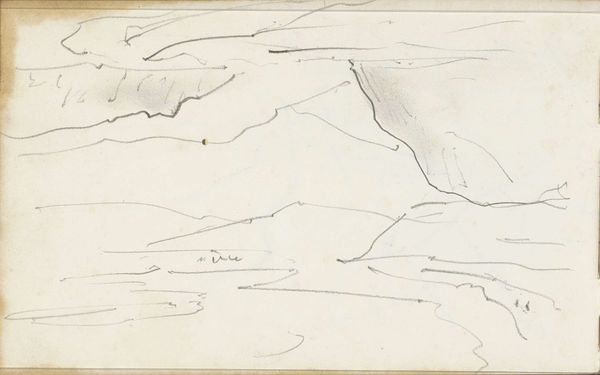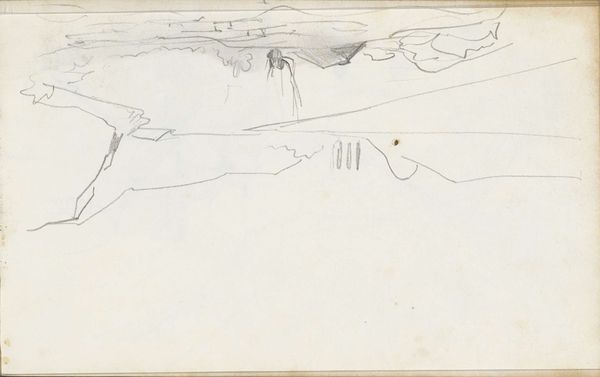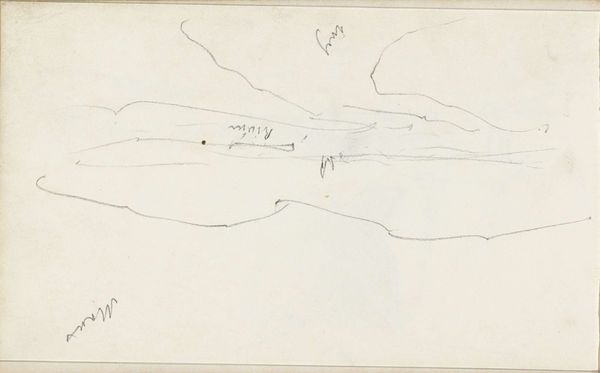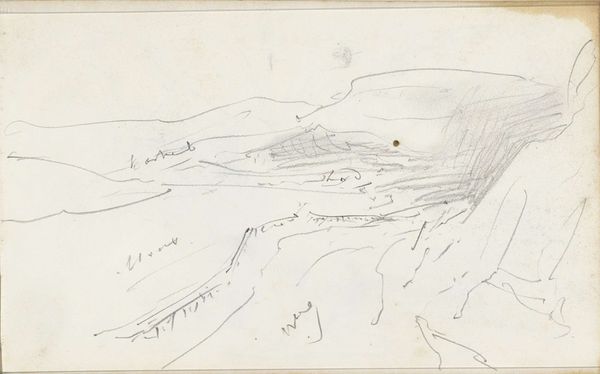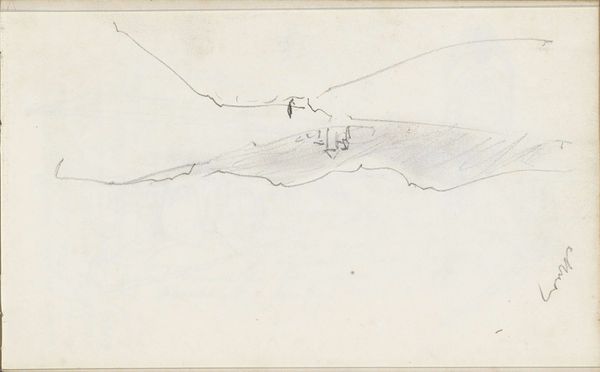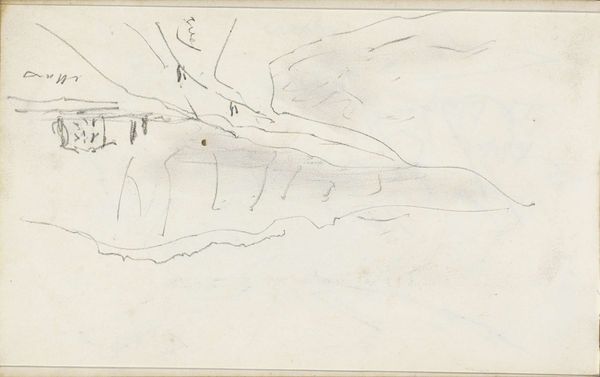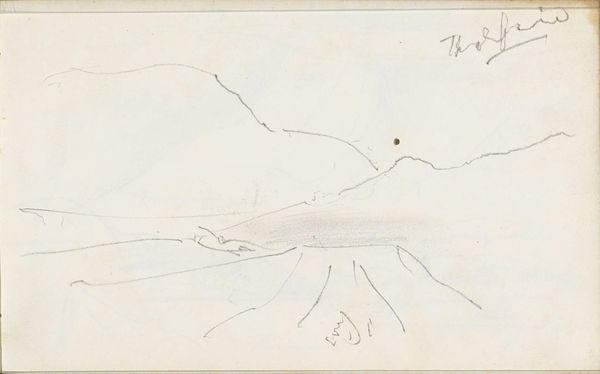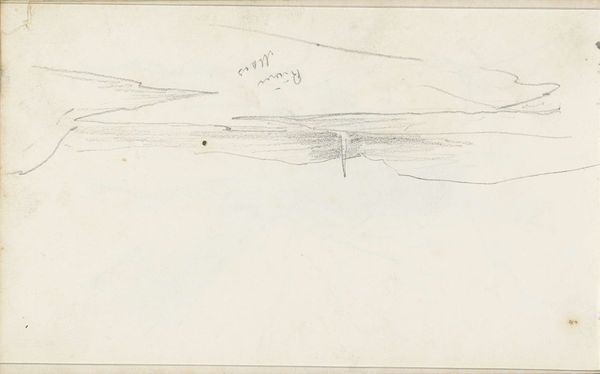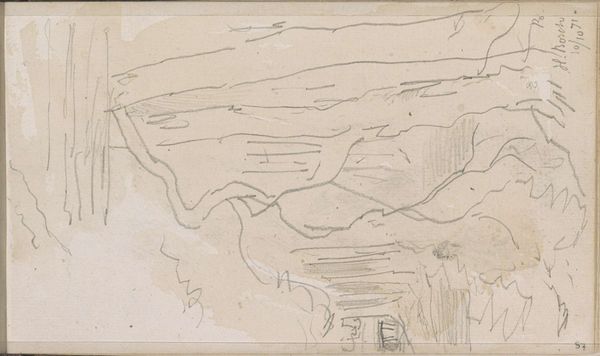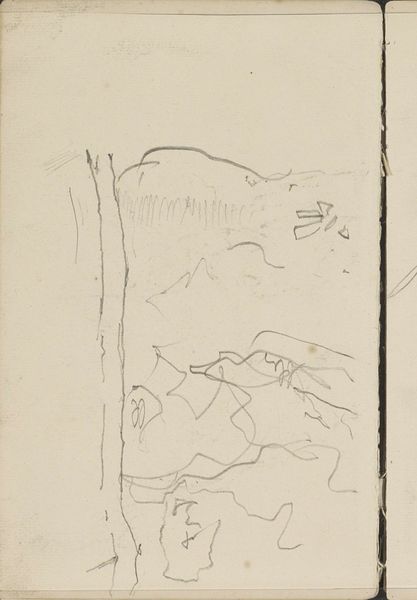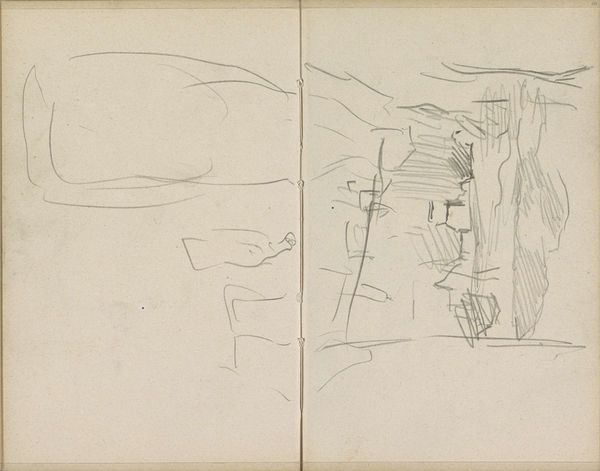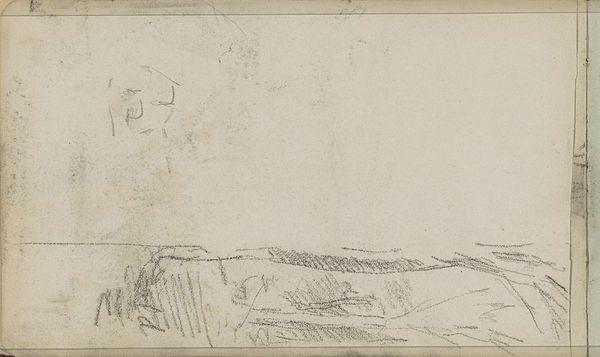
drawing, paper, pencil
#
drawing
#
pencil sketch
#
landscape
#
paper
#
romanticism
#
pen-ink sketch
#
pencil
#
sketchbook drawing
Copyright: Rijks Museum: Open Domain
Curator: Let's delve into Johannes Tavenraat's "Bergen aan de Maas," a landscape drawing from around 1840. Editor: Immediately, the starkness of the paper contrasted with the sparse pencil lines strikes me as desolate, almost haunting. Curator: Haunting is interesting. We know Tavenraat meticulously employed pencil on paper to capture this vista. I'm interested in how the materials and process served him. Was it about capturing a moment, documenting place, or was it something else entirely? It seems so simple, but let's consider the socio-economic context of landscape art then. Editor: The context is vital. How complicit was Tavenraat in reinforcing or subverting the landed gentry's dominance through the visual framing of nature? It's a rather subdued image overall but were his choices a comment on class? I feel like landscape art either idealizes it or criticizes, rarely a balance. Curator: Absolutely. His contemporaries like Jacob Maris often used watercolor washes for that dreamy atmospheric effect, while Tavenraat opted for stark, immediate pencil sketches like we see here. It gives me the sense he was making quick topographical observations rather than idealizing them. This challenges traditional boundaries. Editor: Perhaps his interest lies less in idealization and more in power dynamics and representation, as suggested in some feminist interpretations. Whose stories were validated, and whose were erased, within these picturesque landscapes? Consider that landscape often hides the lives of working-class individuals tied to the land, effectively turning them into scenery. Curator: Fascinating. You make me consider who benefits from representations like this. I wonder how pencil accessibility itself factors in. Compared to, say, oils, it's far more economical, and thus expands access for landscape renderings in this way. I mean, it's just paper and pencil here! Editor: Precisely! By questioning the materials and techniques, we begin to question larger structures of art and production. It encourages dialogues across disciplines. After considering everything, the drawing prompts many contemporary questions about power structures in landscape, who benefits, and whether there are more perspectives to hear, even within such an apparently quiet work. Curator: And for me, I see it more as an insight to what the labor of landscape work meant when artists like Tavenraat could carry these tools anywhere for spontaneous observation. Editor: In summary, a deceptively modest drawing opens up much broader considerations of landscape art’s engagement with historical, gender, and socioeconomic realities.
Comments
No comments
Be the first to comment and join the conversation on the ultimate creative platform.
